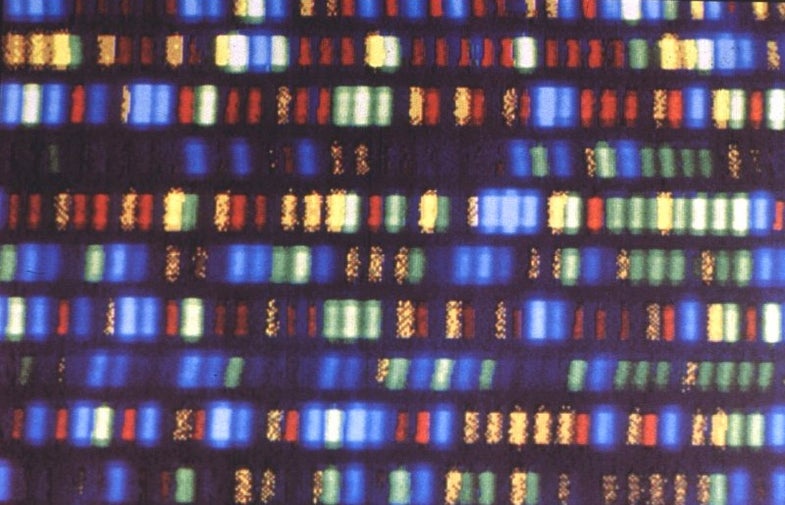Band Will Release Album In DNA
The record of the future

On the one hand, you can fit OK Go’s latest album in the coin pocket of your jeans. On the other hand, it takes hundreds of dollars’ worth of equipment—and a science degree’s worth of skill—to listen to it. Decisions, decisions.
OK Go, the band behind viral music videos like that one with the treadmills, plans to release its newest album encoded into DNA later this year, the New Yorker reports. The band is working with Sri Kosuri, a biochemist now at UCLA who had previously worked on a Harvard University team that translated a book into DNA.
Kosuri will presumably use a similar method to turn OK Go’s “Hungry Ghosts” into DNA. First, the songs will get translated into binary, which, of course, already happens to songs that are recorded in digital formats. (The book was translated into HTML, then binary.) Then, the binary gets encoded into DNA’s A, C, G, and T bases. You choose one base-pair, A-T or C-G, to represent 0s and the other to represent 1s. Kosuri’s lab can build the custom sequence and store it in just a few drops of liquid in a little vial, which OK Go hopes to sell.
To read the liquid, any would-be DNA album-buyer would have to amplify and sequence the DNA, translate the base-pairs back into binary, and then run that binary through a program that can read it as music.
Obviously, this project is more about owning an album on DNA than it is about listening to an album on DNA. (“Hungry Ghosts” is already available in MP3, CD, and vinyl record formats.) So it has been with the numerous DNA data-encoding projects scientists have produced since 1999. Still, perhaps in some distant future, we will store art in DNA. It’s the an incredibly dense data format and a long-lasting one. As long as we are human, we’ll know how to read it—theoretically, if not practically.